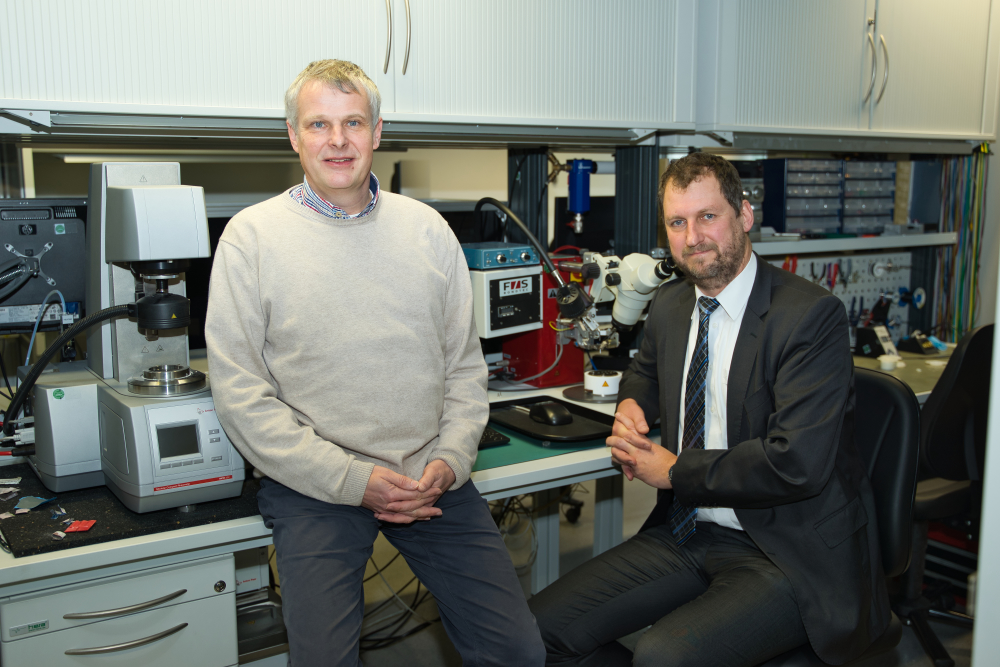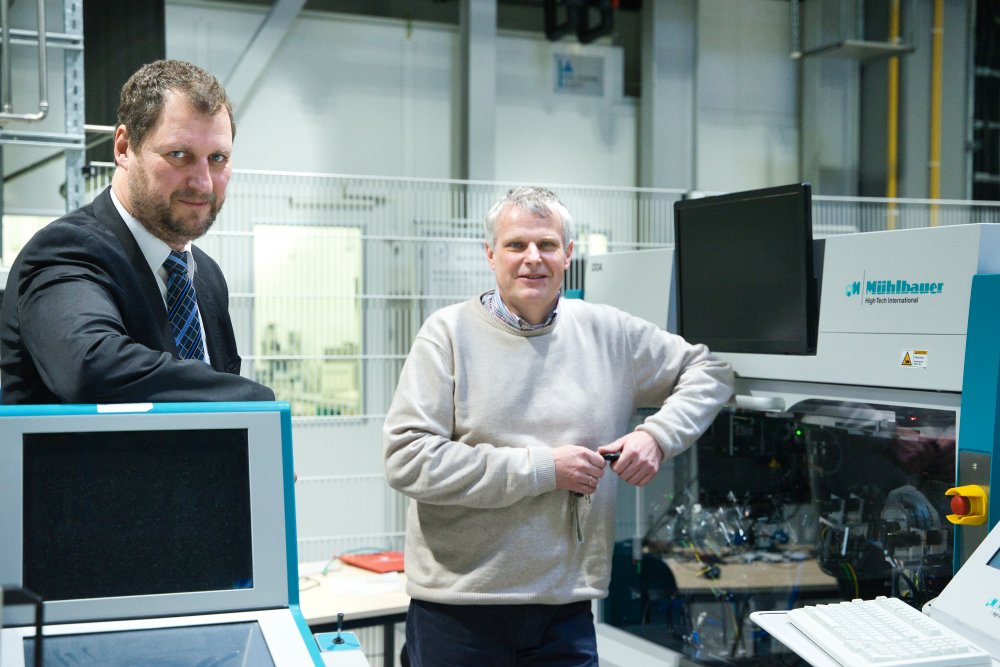The Cluster of Excellence PhoenixD focuses on the research of optical technologies. What does this somewhat unfamiliar term stand for?
Morgner: It refers primarily to technologies that we use every day, such as cameras, displays or optical sensors …
Overmeyer: … or the internet. Without optical fibres, for example, glass fibres, there would be no real-time global communication, no Netflix.
Morgner: Also, worth mentioning are the many medical applications such as endoscopy or microscopy, and of course, solar technology.
What is slowing down the development?
Morgner: The price. Optics are still costly and time-consuming to produce. However, if a laser system no longer costs 10,000 euros but only 500 euros, then many new applications will open up, for example in the field of autonomous driving, agriculture or medical technology.
Overmeyer: That’s why one of PhoenixD’s major goals is to develop high-performance optics for mass production, comparable to microelectronics.
Microchips became a consumer good in the 1980s. How do you intend to achieve this in optics?
Morgner: So far, precision optics has mainly been glass optics . But a focusing effect can also be achieved by cleverly arranging nanoparticles on a surface. In the future, 3D printers could also print optical components.
Overmeyer: The integration of the optical function into the electronics is a very central point here. We want to develop systems that are combined to form a layering system – just like in electronics.
Six disciplines are working together in the cluster. Why is this interdisciplinary cooperation so important?
Morgner: PhoenixD members research new optical systems that first have to be simulated and designed and later produced. We need experts for all stages of this development process, from basic research to practical implementation. This collaboration is a huge opportunity because up to now physicists have rarely worked so closely with chemists or engineers. PhoenixD is building a bridge and encouraging researchers to think beyond their disciplines. This form of collaboration is a great chance and, by the way, unique in its form worldwide.
The cluster started working at the beginning of 2019. Are there already first results?
Overmeyer: Yes, in production engineering, we are currently defining the process chain for the manufacture of such optics and also implementing it mechanically on the nanometre to millimetre scale.
And what do you want to achieve by the end of the project in 2025?
Overmeyer: With a prototype, we want to show that we can produce intelligent optics. To this end, we are planning to set up a manufacturing grid. Such a thing does not yet exist and would be a unique selling proposition for Hannover.
The federal and state governments finance the clusters of excellence. Why should there be publicly funded research on optical technologies?
Morgner: Every invested euro in this field will pay off with a return for society. The people we train are all needed, and spin-offs will create more jobs in the future.
How could companies profit from the research results?
Overmeyer: The decisive factor is the transfer of knowledge via people; for example, the transfer of our scientists to industry.
Morgner: But we are also open for cooperation projects with industry.

